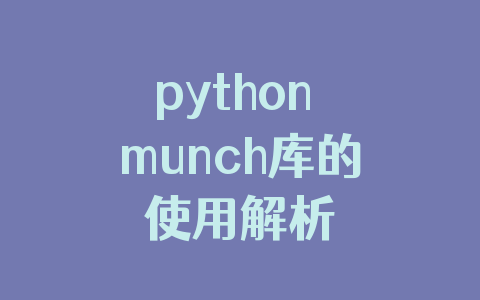1、对于矩阵(matrix)而言
multiply是对应元素相乘,而 * 、np.matmul() 函数 与 np.dot()函数 相当于矩阵乘法(矢量积),对应的列数和行数必须满足乘法规则;如果希望以数量积的方式进行,则必须使用 np.multiply 函数,如下所示:
a = np.mat([[1, 2, 3, 4, 5]]) b = np.mat([[1,2,3,4,5]]) c=np.multiply(a,b) print(c)
结果是
[[ 1 4 9 16 25]]
a = np.mat([[1, 2, 3, 4, 5]])
b = np.mat([ [1],[2],[3],[4],[5] ] )
d=a*b
print(d) #a是shape(1,5),b是shape(5,1),结果是一个实数
结果是
[[55]]
2、对于数组(Array)而言
* 与 multiply均表示的是数量积(即对应元素的乘积相加),np.matmul与np.dot表示的是矢量积(即矩阵乘法)。
代码:
if __name__ == \'__main__\':
w = np.array([[1,2],[3,4]])
x = np.array([[1,3],[2,4]])
w1 = np.array([[1,2],[3,4]])
x1 = np.array([[1,2]])
w_mat = np.mat([[1,2],[3,4]])
x_mat = np.mat([[1,3],[2,4]])
print(\"x1.shape:\",np.shape(x1))
w_x_start = w*x
w_x_dot = np.dot(w,x)
x_w_dot = np.dot(x,w)
w_x_matmul = np.matmul(w, x)
x_w_matmul = np.matmul(x, w)
w_x_multiply = np.multiply(w,x)
x_w_multiply = np.multiply(x, w)
#w1_x1_matmul = np.matmul(w1, x1)
x1_w1_matmul = np.matmul(x1, w1)
w_x_mat_matmul = np.matmul(w_mat,x_mat)
x_w_mat_matmul = np.matmul(x_mat, w_mat)
w_x_mat_start = w_mat*x_mat
x_w_mat_start = x_mat*w_mat
w_x_mat_dot = np.dot(w_mat,x_mat)
x_w_mat_dot = np.dot(x_mat,w_mat)
w_x_mat_multiply = np.multiply(w_mat,x_mat)
x_w_mat_multiply = np.multiply(x_mat,w_mat)
print(\"W.shape:\", np.shape(w))
print(\"x.shape:\", np.shape(x))
print(\"w_x_start.shape:\", np.shape(w_x_start))
print(\"w_x_dot.shape:\", np.shape(w_x_dot))
print(\"x_w_dot.shape:\", np.shape(x_w_dot))
print(\"x1_w1_matmul.shape::\", np.shape(x1_w1_matmul))
print(\"做Array数组运算时:\", \'\\n\')
print(\"w_x_start:\", w_x_start)
print(\"w_x_dot:\", w_x_dot)
print(\"x_w_dot:\", x_w_dot)
print(\"w_x_matmul:\", w_x_matmul)
print(\"x_w_matmul:\", x_w_matmul)
print(\"w_x_multiply:\", w_x_multiply)
print(\"x_w_multiply:\", x_w_multiply)
# print(\"w1_x1_matmul:\", w1_x1_matmul)
print(\"x1_w1_matmul:\", x1_w1_matmul)
print(\"做matrix矩阵运算时:\", \'\\n\')
print(\"w_x_mat_start:\", w_x_mat_start)
print(\"x_w_mat_start:\", x_w_mat_start)
print(\"x_w_mat_dot:\", x_w_mat_dot)
print(\"w_x_mat_dot:\", w_x_mat_dot)
print(\"w_x_mat_matmul:\",w_x_mat_matmul)
print(\"x_w_mat_matmul:\", x_w_mat_matmul)
print(\"w_x_mat_multiply\",w_x_mat_multiply)
print(\"x_w_mat_multiply\", x_w_mat_multiply)
x1.shape: (1, 2) W.shape: (2, 2) x.shape: (2, 2) w_x_start.shape: (2, 2) w_x_dot.shape: (2, 2) x_w_dot.shape: (2, 2) x1_w1_matmul.shape:: (1, 2) 做Array数组运算时: w_x_start: [[ 1 6] [ 6 16]] w_x_dot: [[ 5 11] [11 25]] x_w_dot: [[10 14] [14 20]] w_x_matmul: [[ 5 11] [11 25]] x_w_matmul: [[10 14] [14 20]] w_x_multiply: [[ 1 6] [ 6 16]] x_w_multiply: [[ 1 6] [ 6 16]] x1_w1_matmul: [[ 7 10]] 做matrix矩阵运算时: w_x_mat_start: [[ 5 11] [11 25]] x_w_mat_start: [[10 14] [14 20]] x_w_mat_dot: [[10 14] [14 20]] w_x_mat_dot: [[ 5 11] [11 25]] w_x_mat_matmul: [[ 5 11] [11 25]] x_w_mat_matmul: [[10 14] [14 20]] w_x_mat_multiply [[ 1 6] [ 6 16]] x_w_mat_multiply [[ 1 6] [ 6 16]]
python中转置的优先级高于乘法运算 例如:
a = np.mat([[2, 3, 4]])
b = np.mat([[1,2,3]] )
d=a*b.T
print(d)
结果是
[[20]]
其中a为1行3列,b也为1行3列,按理来说直接计算a*b是不能运算,但是计算d=a*b.T是可以的,结果是20,说明运算顺序是先转置再计算a与b转置的积,*作为矩阵乘法,值得注意的在执行*运算的时候必须符合行列原则。
numpy中tile()函数的用法
b = tile(a,(m,n)):即是把a数组里面的元素复制n次放进一个数组c中,然后再把数组c复制m次放进一个数组b中,通俗地讲就是将a在行方向上复制m次,在列方向上复制n次。
python中的 sum 和 np.sum 是不一样的,如果只写sum的话,表示的是数组中对应的维度相加,如果写 np.sum 的话,表示一个数组中的维数和列数上的数都加在一起。
如下图所示:
补充:总结:numpy中三个乘法运算multiply,dot和* 的区别
引言:
本人在做机器学习的练习1的时候,时常抛出错误:
Not aligned是什么意思呢?
意思是两个矩阵相乘无意义。
线性代数中mxn 和 nxp的矩阵才能相乘,其结果是mxp的矩阵。
出错源代码:
def gradientDescent(X,y,theta,alpha,iteration):
colunms = int(theta.ravel().shape[1])
thetai = np.matrix(np.zeros(theta.shape))
cost = np.zeros(iteration)
for i in range(iteration):
error = X*theta.T-y
for j in range(colunms):
a = np.sum(error*X[:,j])/len(X) ########## error!
thetai[0,j] = thetai[0,j] - alpha*a
theta = thetai
cost[i] = computeCost(X, y, theta)
return theta,cost
这里error是一个nx1的矩阵,theta.T也是一个nx1的矩阵。
而矩阵之间*运算符表示矩阵乘法。我们这里想实现矩阵的对应元素相乘,因此应该用np.multiply()实现。
总结:
(读者可使用简单的举例自行验证)
1.*用法:
矩阵与矩阵:矩阵乘法(matrix)
数组与数组:对应位置相乘(array)
2.np.dot()用法:
矩阵相乘的结果
3.np.multiply()用法:
数组、矩阵都得到对应位置相乘。
以上为个人经验,希望能给大家一个参考,也希望大家多多支持自学编程网。















